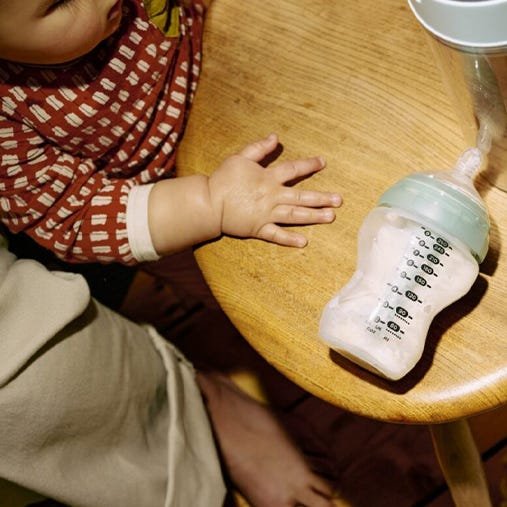Signs and symptoms of reflux
It can be difficult to distinguish between reflux and colic in babies, which is why it's important to educate yourself on the differences between the two. Your baby may have reflux if they are:
- unsettled or coughing while feeding
- vomiting up milk during or after feeding
- gulping or swallowing after burping and feeding
- not gaining weight as expected
- unable to be soothed when crying
What is silent reflux?
Sometimes babies can show signs of reflux, but don’t spit out milk or visibly be sick. Instead, they swallow it. This is known as silent reflux. In cases of silent reflux, it's less obvious to parents and carers what's happening, but still painful and unpleasant for baby.
Treating reflux
Babies with reflux who are happy, healthy, and gaining weight usually don’t need to see a doctor, but there are a few techniques you can try at home to help soothe and settle their symptoms.
Keep your baby upright during and after feeding
Feeding your baby in an upright position and keeping them upright for as long as possible (ideally at least one hour) after feeding means that gravity can help keep the milk down and prevent it from coming back up. If your baby is breastfed and experiencing reflux, it may help to give a different breastfeeding position a go.
Feed your baby slowly
Practising paced feeding, feeding your baby slowly and giving formula-fed babies smaller feeds more often if they're formula-fed helps to prevent their tummy from becoming too full.
Wind your baby regularly
Burping your baby regularly during and after feeds helps to release any trapped wind that may be making them uncomfortable.
Make sure they sleep on their back
You should always place your little one on their back – not their front or side – to sleep and you shouldn’t raise the head of their cot or Moses basket. As they grow, they'll start to roll from their front to their back independently, then you can leave them to find a comfortable position on their own.
Keep a diary of feeds and symptoms
Getting into the habit of recording your baby's feed and symptoms in diary form can be helpful for the doctor to review if your baby is struggling to gain weight.
What is colic?
Colic is excessive crying in infancy without a known cause. Young babies can get it from around two weeks of age, and it can last until they reach six months old.











